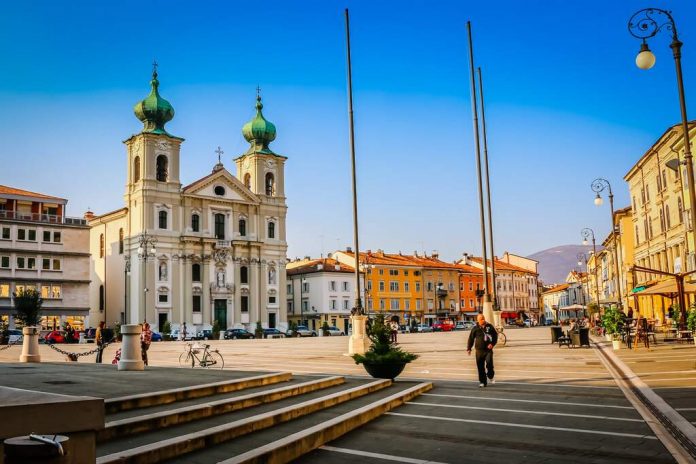by InTrieste
In a symbolic and practical step toward a more integrated Europe, officials in Gorizia on Tuesday unveiled a new cross-border public transportation service linking the Italian city with its Slovenian twin, Nova Gorica. The initiative, launched as part of the broader Trans-borders + project and tied to the upcoming GO! 2025 European Capital of Culture celebrations, seeks to blur the line where history once drew borders.
“This is a project with deep social and economic significance,” said Cristina Amirante, regional councilor for Infrastructure and Territory in Italy’s Friuli Venezia Giulia region, at the event. “It improves the connection between two neighboring cities that, despite being in different countries, share a single community. GO!2025 proves that promoting the European Capital of Culture can help us overcome the concept of borders that historically divided these lands.”
The transnational shuttle bus service, which officially begins operation this spring, was presented during a joint congress held in Gorizia and attended by local and regional officials, including Gorizia Mayor Rodolfo Ziberna and Nova Gorica Deputy Mayor Tomaž Horvat. The project is supported by the Interreg Central Europe program for 2021–2027 and co-financed by the Friuli Venezia Giulia Region with over €416,000 ($443,000) to cover the cost of new buses and start-up operations.
Amirante emphasized that while the launch of the bus system proceeded smoothly, further challenges remain in extending cross-border connectivity to the rail network.
“One of the main obstacles lies in the differing regulations between Italy and Slovenia regarding safety standards and signage,” she noted. “Additionally, the rigidity of the Slovenian railway operator has complicated dialogue with our administration.”
Despite those difficulties, officials remain hopeful that the current pilot program for bus transit will lead to a long-term model for integrated transport — and that it could eventually extend to trains as well, offering a seamless travel experience for locals and tourists beyond 2025.
Gorizia and Nova Gorica, once physically divided by barbed wire during the Cold War, are now staging one of the most ambitious cross-border cultural collaborations in recent European history. GO!2025, the shared European Capital of Culture initiative, is expected to bring tens of thousands of visitors to the area — and with them, renewed urgency to connect not just infrastructure, but communities.





























